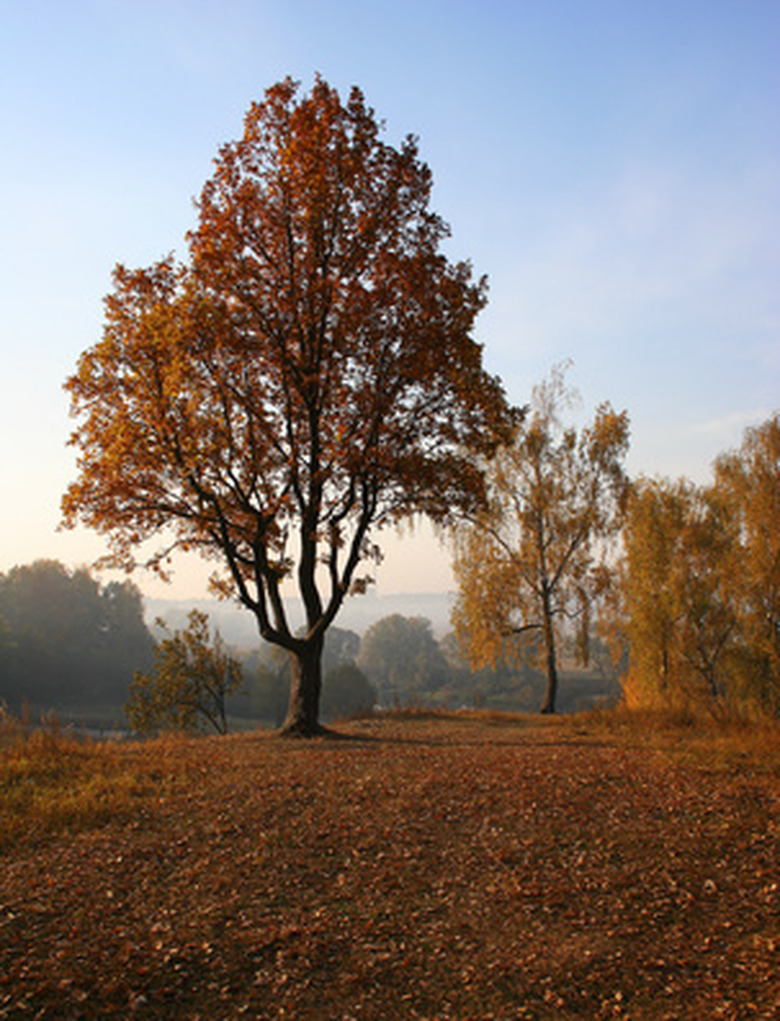Gray Fungus On Tree
The presence of gray fungus on trees is caused by a fungal infection. This infection is a widespread problem that affects many host plants. Identify susceptible plants as well as symptoms and damage. Familiarize yourself with disease traits and control methods for effective treatment of your home garden trees. Employ proper care for vigorous trees capable of resisting or fighting off gray fungus.
Identification
Gray fungus on trees is known as gray mold or botrytis blight. Gray mold is a fungal infection caused by species of the Botrytis fungus. These fungi are quick spreaders and attack healthy plant tissue, according to the Clemson University Extension. Gray mold thrives on wet surfaces. The more moisture present on and surrounding a plant, the greater the likelihood of infection and the greater the severity, according to the University of Illinois Extension.
- The presence of gray fungus on trees is caused by a fungal infection.
Host Plants
Gray mold can attack thousands of plant varieties, according to the University of Illinois Extension. Tree host plants include, but are not limited to, Douglas firs, flowering almond, peach, pear, plum, magnolia and ash. Some other types of host plants include fruits and vegetables like artichokes, broccoli, blueberries, lettuce and strawberries. Herbaceous perennials and annuals affected by gray mold include begonias, sunflowers, bleeding hearts, peonies and poppies. Take caution when planting to avoid inundating your garden with highly susceptible host plants.
Symptoms and Damage
Symptoms of gray fungus on trees vary from plant to plant. However, look for a gray moldlike webbed substance particularly on leaf and flower surfaces. This gray fungus forms after smaller gray spots appear. When movement occurs on tree parts, spores are released, resulting in the appearance of spore clouds that resemble dust, according to the University of Illinois Extension. In cases of severe infection or if left untreated, gray mold can destroy your plants.
- Gray mold can attack thousands of plant varieties, according to the University of Illinois Extension.
- When movement occurs on tree parts, spores are released, resulting in the appearance of spore clouds that resemble dust, according to the University of Illinois Extension.
Natural Control
Natural control is a significant aspect of managing gray fungus on trees because it often allows you to avoid chemical control measures. Plant your trees in areas with good air circulation by spacing them well and pruning when necessary. Sanitize pruning tools between each cut and from use on one tree to the next to prevent fungi spread. Remove, collect and destroy infected plant parts to further inhibit the transfer of disease. Since fungi thrive in wet conditions, avoid overhead irrigation that creates extended periods of wetness on leaves, according to the Clemson University Extension.
Chemical Control
Though chemical control of gray mold caused by botrytis fungi is usually unnecessary, certain fungicides offer help during humid conditions as a preventive measure. Apply a chemical control containing an active ingredient like benomyl or dicloran, according to Reforestation, Nurseries, & Genetics Resources. Since different trees have different needs, research your particular tree or contact a licensed professional for safe and appropriate fungicide application. When in need of assistance, contact your local county extension agent for advice.
- Natural control is a significant aspect of managing gray fungus on trees because it often allows you to avoid chemical control measures.
